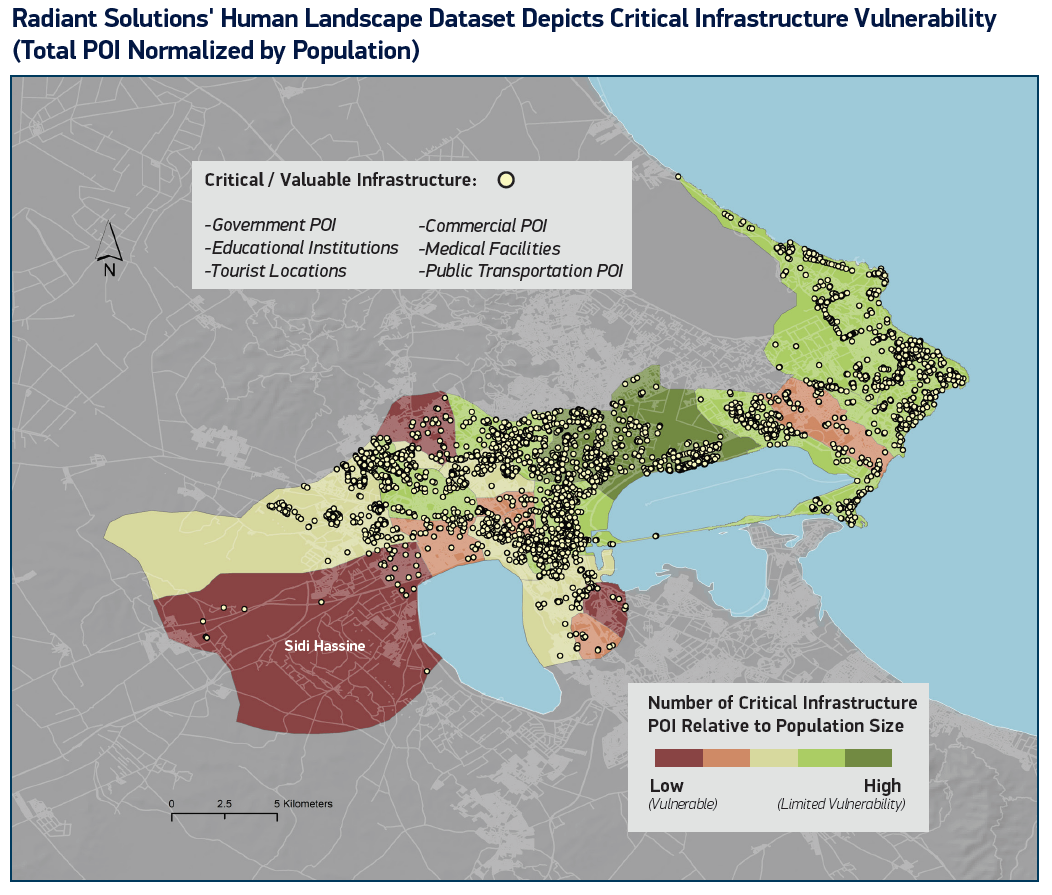Governments in North Africa are struggling to accommodate the employment needs of the region’s burgeoning youth population. As a result, tens of thousands of working-age people are leaving their rural homelands to compete for a finite number of jobs in already overcrowded cities. The impact has been felt most keenly in Tunisia, whose capital city, Tunis, has experienced the second-highest rate of urban growth in the region over the last 15 years—and where an increasing number of disenfranchised young workers are forced to participate in the city’s informal economy.
This month’s Radiant Spotlight uses Maxar’s unmatched geospatial technologies and capabilities to analyze North Africa’s population trends and rapidly changing urban landscapes. A powerful combination of Radiant Solutions tools—including Hot Spot Analysis, Persistent Change Monitoring (PCM) and our foundational Human Landscape dataset—provide the geospatial intelligence key stakeholders need to craft proactive policies that improve urban planning in meaningful ways.
How can you grasp the scope of the population density-related changes that are radically reshaping North Africa now and for the foreseeable future? Get the real story from Tunisia in May’s Radiant Spotlight.
Fill out the form to access the latest edition and subscribe to the Spotlight:
Thank you for subscribing
Sneak Peek:
Critical Infrastructure in Each Delegation Across Tunis
Relevant features and points of interest (POI) were extracted from Radiant Solutions' Human Landscape datasets to provide a basic measurement of critical infrastructure in each delegation across Tunis. These datasets leverage DigitalGlobe's high-resolution satellite imagery to enrich thousands of publicly available data sources and provide rich attribution and metadata for advanced analysis. For this publication, a total of 4,014 unique features were mapped within Tunis—including government POI, educational institutions, tourist locations, commercial POI, medical facilities and public transportation POI.
While the delegation of Sidi Hassine has accounted for the fourth-most urban development (1,670 km2) in Tunis since 2004 (and the sixth-most when normalized by population size), its critical infrastructure lags behind the rest of the city. When critical infrastructure POI totals are normalized by population size for each delegation, Sidi Hassine has the second-lowest rating. This further highlights the vulnerability of both internal migrants and current residents of Sidi Hassine
